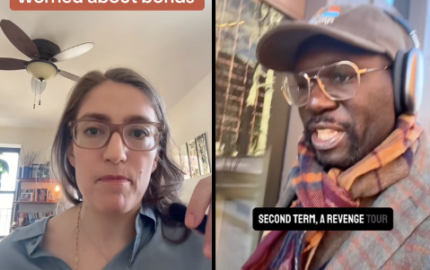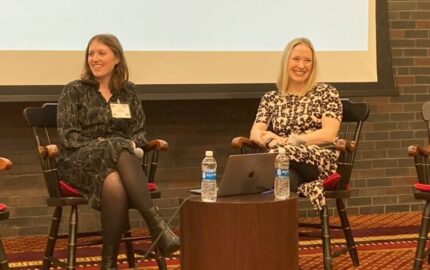With the decline of print newspapers, what will happen to the still images that formed the bedrock of visual storytelling? Veteran photographers, television producers and filmmakers discussed the issue last month in New York during a one-day look at the future of visual narratives.
 Ed Kashi, who has done award-winning work in both photography and documentary video, expressed concern that the dominance of video might crowd out a vital storytelling role for still photography. Travis Fox, who worked for The Washington Post for 10 years on still photography and video projects, also wondered about the future, asking, “Are we just becoming short-form documentary people, or are we still photographers? What’s the difference?” Other attendees speculated about the potential loss of the public’s ability to parse still images.
Ed Kashi, who has done award-winning work in both photography and documentary video, expressed concern that the dominance of video might crowd out a vital storytelling role for still photography. Travis Fox, who worked for The Washington Post for 10 years on still photography and video projects, also wondered about the future, asking, “Are we just becoming short-form documentary people, or are we still photographers? What’s the difference?” Other attendees speculated about the potential loss of the public’s ability to parse still images.But Brian Storm, president of MediaStorm, doesn't think that's likely to happen. After showing “Jumping Rock,” a segment from Danny Wilcox Frazier’s project Driftless (which contains some nudity), Storm said,
“In print, in newspaper, the average newspaper reader looks at a photograph for 0.2 seconds. 0.2 seconds [see *note at end of post for revised numbers from Storm—Ed.]. And in this piece, I’ve got a still picture on the screen for five seconds. I own your attention span. I dictate that you’re going to look at it longer in this format.”
According to Storm, photographer Frazier had been focused on a book of images as the central vehicle for Driftless—a book Frazier had guessed might sell 4,000 copies. Ten times that many people watched the project the day it posted on the MediaStorm site, and Storm estimated that as many as 150,000 – 200,000 people have seen Driftless all told. He described the changes in access and distribution as “a revolution,” making it possible to reach more people with long-form stories—stories that might never have gotten told in prior decades. (Storm talks more about these ideas in a recent interview on our sister site.)
Despite the revolution in viewing, Storm said that the only new elements are the tools and distribution. “I don’t feel like we’re trying to reinvent storytelling,” he said. “We’re really focused on doing linear stories… powered by still photography in a video format.”
Talking about the future of more experimental narrative, Storm noted the interactive work of Ashley Wells at MSNBC and Zach Wise at The New York Times, saying “I think it’s cool, resource-wise that we have a few people really pushing and experimenting there. But let’s not get wowed and off-track on what we are. We are storytellers.”
Some participants were more interested in these new approaches, as explored in the work of attendee Jen Gilomen. Others had altogether different concerns about the sea change in visual narratives. Fox noted that previous technological revolutions like the moon landing involved millions in research and development funding, but that in the brave new world of digital narrative, “There’s no R&D money.” As a result, Fox says that “I think one of the things that we’re living today is a grand experiment in storytelling.”
Frontline executive producer David Fanning suggested that with so many tools available to the public at low cost, the public itself is conducting the R&D on this experiment. Magnum Photos director Mark Lubell voiced a similar idea about the current state of visual storytelling:
“The R&D right now is 450 million people on Facebook. It’s four million pictures coming in Flickr a day. I don’t know how many YouTube videos are coming in. That’s the R&D that’s actually happening. That’s the audience. That’s actually where this conversation is taking place.”
All told, still imagery seems likely to continue to play a strong role in visual storytelling, though more and more, that role may exist as just one element of video or interactive projects. And the power to choose how and when those images get seen seems to be shifting farther and farther away from traditional news outlets.
[*Asked for the source of this number, Brian Storm pointed to Poynter's 2004 Eyetrack III study, which lists the following stats for photos on news site homepages: small photo, 0.6 seconds; medium photo, 1.5 seconds; large photo, 2.3 seconds—numbers which still make Storm's point, though not as emphatically. Storm also noted a recent MSNBC slide show that garnered 78 million page views.]


